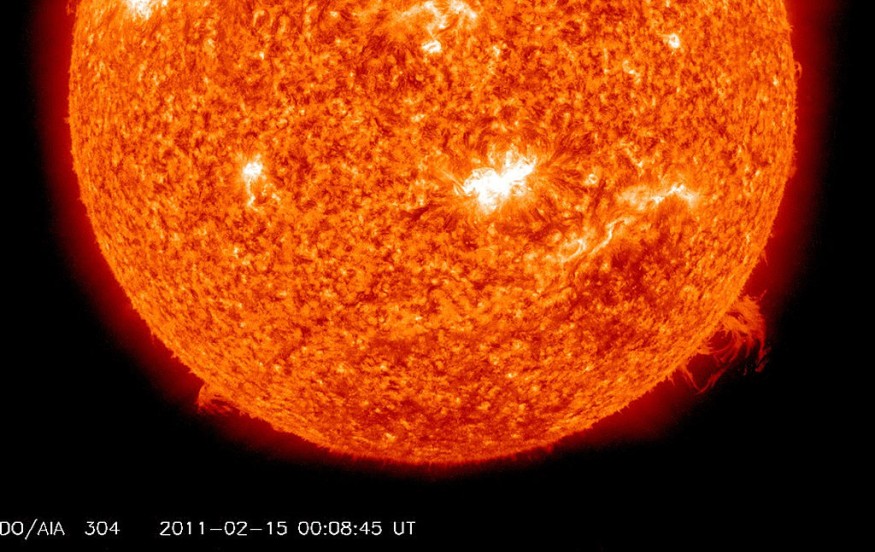Power grids and satellites may experience issues because of a solar storm that zipped past Earth this month, experts say.
According to meteorological information gathered by The US Sun, the neighboring solar explosion snowplowed dense plasma towards the Earth. The said phenomenon was expected to cause geomagnetic storms in at least two US states.
According to the scientists at SpaceWeather.com (via The New York Post), a CME passed close to Earth on July 1. It did not directly strike the planet's magnetic field.
A "near miss" was expected to have effects on the Earth's magnetic field and could even cause satellites to tumble out of orbit.
"Instead, it made itself known by "snowplowing" dense plasma in our direction," the SpaceWeather.com experts added.
A strong flash of electromagnetic radiation called a solar flare is produced in the sun's atmosphere. They can persist for minutes or hours and are the biggest explosions in our solar system.
The magnetic field of the sun flips once every 11 years, Live Mint reported. That implies that as the north and south poles alternate, the sun may first act wildly before becoming stable. The magnetic field flips once it has settled, and the cycle is repeated.

ALSO READ : Fast Geomagnetic Storm Hits Earth After a Massive Sunspot That Doubled in Size Was Spotted Last Week
How Extreme Solar Flares Are Causing Satellites to Fall Off Their Orbits
Satellites have been falling out of their orbits at an alarming rate over the past several years due to a mysterious phenomenon linked to the sun's solar flare.
Satellites are plummeting and crashing up to 10 times quicker than before due to the series of events, which have occurred at the same time as the start of a new solar cycle.
"In the last five, six years, the satellites were sinking about two and a half kilometers [1.5 miles] a year," Anja Stromme, ESA's Swarm mission manager, told Space.com.
The upper atmosphere of Earth has been significantly impacted by an increasing amount of solar wind, sunspots, solar flares, and coronal mass ejections that have been produced by our beloved life-giving sun since last fall. All of this occurs because the star has completed an 11-year solar cycle.
Even if the process is normal, it causes havoc for the satellites.
Denser air always causes more drag for satellites, which can send certain lower-orbiting spacecraft tumbling to their ultimate destruction.
Stromme continued that all spacecraft in the vicinity of the 250-mile height will undoubtedly be impacted by this condition. It means that to maintain stability, even the International Space Station will need to carry out more frequent reboot maneuvers. But what about common satellites that are unable to carry out such procedures?
According to Stromme, several of these new satellites lack propulsion systems. In other words, the satellites will reenter the atmosphere sooner than they would have during the solar minimum and would spend less time in orbit.
RELATED ARTICLE : Solar Storm Warning: Flares Are Heading Towards the Earth, Could It Take Down Communications Lines Worldwide?
Check out more news and information on Space in Science Times.
© 2025 ScienceTimes.com All rights reserved. Do not reproduce without permission. The window to the world of Science Times.











